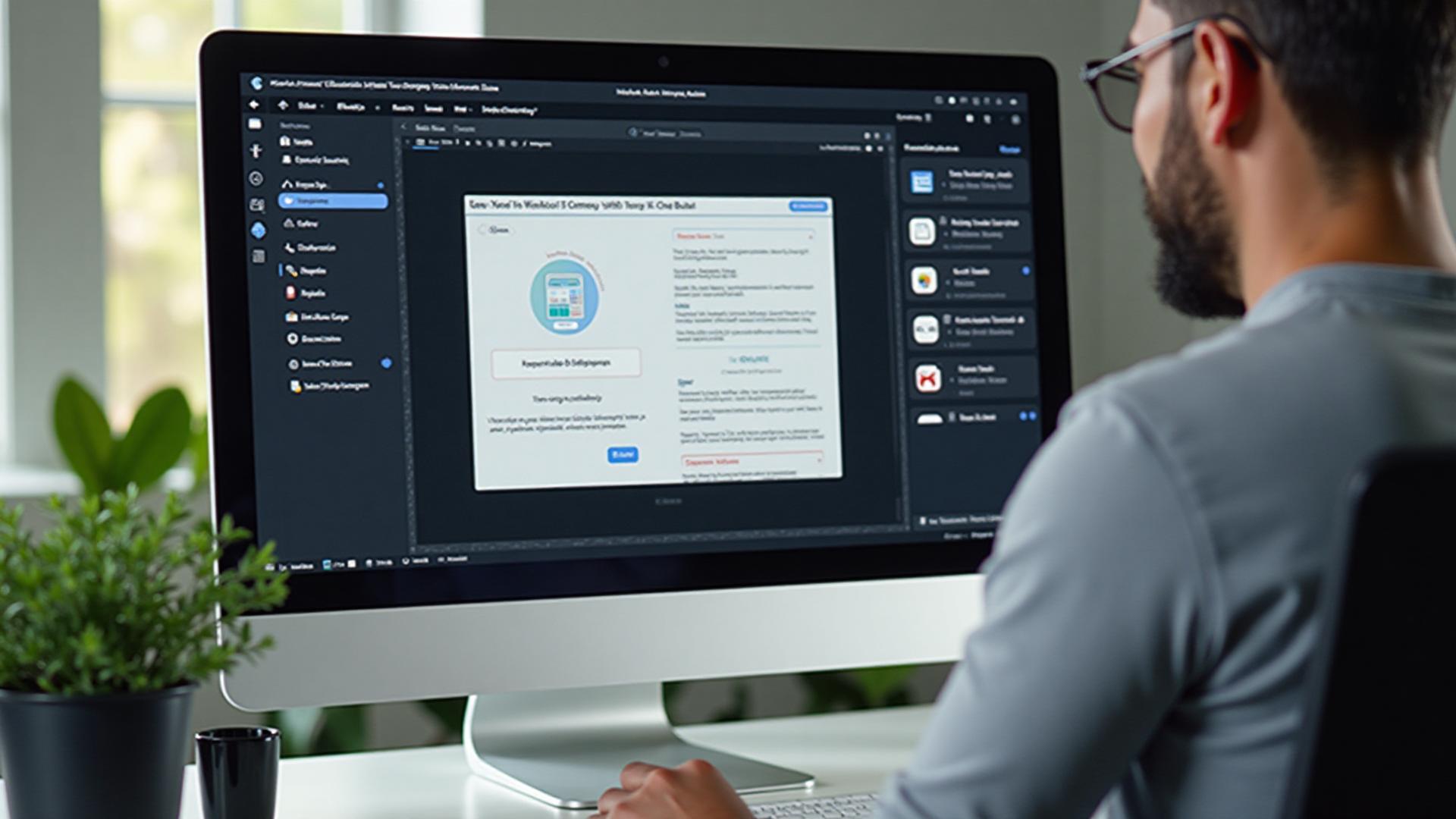How to Build Your First Custom AI Agent—No Coding Required
Learn to create intelligent AI agents using modern no-code tools. This step-by-step tutorial shows you how to build custom AI solutions for specific tasks like answering volunteer questions or summarizing meeting notes.

Building custom AI agents no longer requires extensive programming knowledge or technical expertise. Modern no-code platforms have democratized AI development, enabling nonprofit staff to create intelligent solutions that address specific organizational needs without writing a single line of code.
Custom AI agents can handle a wide range of tasks, from answering frequently asked questions to processing documents, scheduling meetings, and providing personalized support to stakeholders. These agents work 24/7, maintain consistency, and can be easily updated and improved based on feedback and changing requirements.
The key to successful AI agent development lies in choosing the right platform, defining clear objectives, and following a systematic approach that ensures your agent delivers value while maintaining quality and reliability. This comprehensive tutorial guides you through the entire process from conception to deployment.
Whether you're looking to automate volunteer inquiries, streamline document processing, or provide personalized support to beneficiaries, this guide provides the knowledge and tools you need to build your first custom AI agent successfully.
What Are AI Agents and Why Build Custom Ones?
AI agents are intelligent software programs that can perform specific tasks autonomously, making decisions and taking actions based on their programming and training. Unlike generic chatbots or AI tools, custom agents are designed specifically for your organization's unique needs, processes, and stakeholder requirements.
Custom AI agents offer several advantages over off-the-shelf solutions. They can be tailored to your specific workflows, trained on your organization's data and knowledge, and designed to reflect your unique voice, values, and communication style. This customization ensures that the agent serves your mission effectively while maintaining consistency with your brand and organizational culture.
Additionally, custom agents can integrate with your existing systems and processes, providing seamless automation that enhances rather than disrupts your operations. They can learn and improve over time, becoming more effective as they gain experience and receive feedback from users and stakeholders.
Custom AI Agent Benefits
- • Tailored to your specific needs and processes
- • Trained on your organization's knowledge and data
- • Reflects your unique voice and communication style
- • Integrates with existing systems and workflows
- • Learns and improves over time
Common Use Cases
- • Answering volunteer and donor questions
- • Processing and summarizing meeting notes
- • Automating document review and analysis
- • Providing personalized program information
- • Handling routine administrative tasks
Choosing the Right No-Code Platform
Selecting the right no-code platform is crucial for successful AI agent development. Different platforms offer varying capabilities, pricing models, and integration options, so it's important to choose one that aligns with your technical requirements, budget, and long-term goals.
The best platform for your organization depends on factors such as the complexity of tasks you want to automate, your technical comfort level, integration requirements, and scalability needs. Consider starting with simpler platforms and gradually moving to more advanced solutions as your needs evolve.
Zapier with AI Integration
Zapier offers AI-powered automation that can handle simple to moderate complexity tasks. It's excellent for nonprofits just starting with AI automation and offers generous nonprofit discounts.
- Easy-to-use visual interface with drag-and-drop functionality
- Extensive integration library with popular nonprofit tools
- AI-powered data processing and content generation
- Generous nonprofit pricing and support programs
Microsoft Power Platform
Microsoft's Power Platform provides comprehensive AI capabilities through Power Virtual Agents and Power Automate, ideal for organizations already using Microsoft 365.
- Seamless integration with Microsoft 365 and Teams
- Advanced AI capabilities including natural language processing
- Robust security and compliance features
- Nonprofit licensing discounts and technical support
OpenAI GPT with Custom Instructions
OpenAI's GPT models can be customized with specific instructions and knowledge bases to create specialized AI agents for various nonprofit tasks and applications.
- Highly customizable with detailed instruction sets
- Advanced natural language understanding and generation
- API integration capabilities for custom applications
- Continuous improvement through usage and feedback
Specialized AI Agent Platforms
Dedicated AI agent platforms like Voiceflow, Botpress, or Landbot offer specialized tools for creating conversational AI agents with advanced capabilities and customization options.
- Purpose-built for conversational AI development
- Advanced conversation flow design and management
- Multi-channel deployment options (web, mobile, voice)
- Analytics and performance monitoring tools
Step-by-Step Tutorial: Building Your First AI Agent
This tutorial walks you through building a volunteer inquiry AI agent using a popular no-code platform. The same principles apply to other platforms and use cases, with adjustments for specific features and capabilities.
We'll use Microsoft Power Virtual Agents as our example platform, but you can adapt these steps to other platforms based on your preferences and requirements.
Define Your Agent's Purpose and Scope
Start by clearly defining what your AI agent will do and what it won't do. For our volunteer inquiry agent, we'll focus on answering common questions about volunteer opportunities, requirements, and application processes.
Example Scope Definition:
- • Answer questions about available volunteer positions
- • Explain volunteer requirements and qualifications
- • Provide information about application processes
- • Direct complex inquiries to human staff
- • Collect contact information for follow-up
Gather and Organize Knowledge Base
Collect all relevant information your agent will need to answer questions accurately. This includes FAQs, program descriptions, policies, and contact information.
Knowledge Base Checklist:
- • Frequently asked questions and answers
- • Volunteer position descriptions and requirements
- • Application process steps and timelines
- • Contact information for different departments
- • Policies and procedures relevant to volunteers
Set Up Your Platform Account
Create your account on your chosen platform and familiarize yourself with the interface. Most platforms offer free trials or nonprofit discounts, so take advantage of these opportunities.
Platform Setup Steps:
- • Sign up for an account and verify nonprofit status
- • Explore the platform interface and available features
- • Review documentation and tutorial resources
- • Set up your workspace and project structure
- • Configure basic settings and preferences
Create Your Agent's Personality and Voice
Define how your agent will communicate, including tone, style, and personality traits that align with your organization's brand and values.
Voice and Personality Guidelines:
- • Warm, friendly, and professional tone
- • Clear, concise communication style
- • Empathetic and supportive responses
- • Consistent with organizational brand voice
- • Appropriate for diverse volunteer audiences
Design Conversation Flows
Map out the different conversation paths your agent might take, including how to handle various questions, provide information, and escalate to human staff when needed.
Conversation Flow Design:
- • Welcome message and introduction
- • Question recognition and routing
- • Information delivery and clarification
- • Follow-up questions and additional help
- • Escalation to human staff when appropriate
Build and Test Your Agent
Use your platform's tools to build your agent, input your knowledge base, and test different conversation scenarios to ensure it works as expected.
Testing Checklist:
- • Test common questions and scenarios
- • Verify accuracy of information provided
- • Check conversation flow and user experience
- • Test escalation and handoff processes
- • Gather feedback from staff and stakeholders
Deploy and Monitor Performance
Launch your agent in a controlled environment, monitor its performance, and gather feedback to make improvements and optimizations.
Deployment and Monitoring:
- • Start with limited deployment and gradual rollout
- • Monitor conversation logs and user feedback
- • Track success metrics and performance indicators
- • Make regular updates and improvements
- • Train staff on agent capabilities and limitations
Best Practices for AI Agent Development
Following best practices ensures that your AI agent delivers value while maintaining quality, reliability, and user satisfaction. These guidelines help you avoid common pitfalls and build agents that enhance rather than hinder your organizational operations.
Development Best Practices
- Start simple and gradually add complexity
- Define clear boundaries and limitations
- Test thoroughly before deployment
- Plan for regular updates and maintenance
User Experience Best Practices
- Design intuitive conversation flows
- Provide clear options and next steps
- Enable easy escalation to human staff
- Collect feedback for continuous improvement
Performance Optimization
- Monitor conversation logs and analytics
- Identify common failure points and improve
- Update knowledge base regularly
- Train staff on agent capabilities and limitations
Communication Guidelines
- Maintain consistent brand voice and tone
- Use clear, accessible language
- Provide accurate, up-to-date information
- Be transparent about AI assistance
Conclusion: Empowering Nonprofits Through Custom AI Agents
Building custom AI agents using no-code platforms represents a powerful opportunity for nonprofits to automate routine tasks, improve stakeholder experiences, and enhance operational efficiency without requiring extensive technical expertise or resources. By following systematic development processes and best practices, organizations can create intelligent solutions that serve their unique needs and advance their missions.
The key to success lies in starting simple, defining clear objectives, and iteratively improving your agent based on user feedback and performance data. Remember that AI agents are tools to enhance human capabilities, not replace them, and the most effective implementations combine intelligent automation with human oversight and intervention.
As you build your first AI agent, focus on creating value for your stakeholders while maintaining the authenticity and personal touch that defines your organization. With careful planning, thoughtful implementation, and continuous improvement, your custom AI agent can become a valuable asset that supports your mission and enhances your impact.
